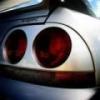Check Engine Light Pfc
Announcements
-
Similar Content
-
Latest Posts
-
It could be in the tune but in both cases it couldn't be completely solved or eliminated by some of the best tuners in victoria so I'm DOUBTFUL that it's in the tune or ECU but stranger things have happened of course. I've pondered that theory too but is there any theories that thinner and smaller ports overall would cause a turbo to spike? I would've thought it would just restrict it in general if it was small enough to make a difference. I wouldn't expect it to make a different at what is essentially sub 300kw at 4000rpm anyway. I think the next step is going to have to be the 6psi spring to rule out the idea that the gate is cracking open far too wide initially. At least that is the cheapest (free) thing to check initially.
-
I'm thinking it is skinny NA Neo port sizing and cams. Somehow.
-
-5’s did it. 8474 did it. Not hot side related. ECU related? 🤨🤪
-
Above you mentioned you only need to sand primer if there's an issue with it but with fillers it says the surface needs to be sanded to X grit beforehand. Does that sorta contradict that point as the primer hasn't been sanded yet? At the same time if I sand the primer, there's a good chance I'll expose the bare metal and I'm just chasing my tail at that point. Or I'll just use a sand sponge instead of sandpaper, it seems to be far finer in terms of abrasiveness as opposed to sandpaper. From what I understand, filler is like primer and needs scratches from the sandpaper to help it adhere to the panel. I realised the way I'm doing things is actually a bit counter productive as there's a chance after I put filler I will need to put epoxy primer again as opposed to putting the filler first and potentially no primer if I don't go to bare metal. Will keep this in my mind for the rest of my repairs.
-
Not without making up a new screamer pipe from scatch I don't think based upon the angles of the current return. Backpressure shouldn't be an issue though as the straight gate isn't affected by backpressure in the same way that a poppet valve is, and on top of that the exhast system is 4" all the way through so there should be minimal pressure if any to begin with.
-







Recommended Posts
Create an account or sign in to comment
You need to be a member in order to leave a comment
Create an account
Sign up for a new account in our community. It's easy!
Register a new accountSign in
Already have an account? Sign in here.
Sign In Now